Potřebujeme váš souhlas k využití jednotlivých dat, aby se vám mimo jiné mohly ukazovat informace týkající se vašich zájmů. Souhlas udělíte kliknutím na tlačítko „OK“.
ASTM D5607-08
Standard Test Method for Performing Laboratory Direct Shear Strength Tests of Rock Specimens Under Constant Normal Force
Automaticky přeložený název:
Standardní zkušební metoda pro Performing Laboratory Direct smykové pevnosti Testy Skalní vzorků za konstantních sil
NORMA vydána dne 1.7.2008
Informace o normě:
Označení normy: ASTM D5607-08
Poznámka: NEPLATNÁ
Datum vydání normy: 1.7.2008
Kód zboží: NS-31859
Počet stran: 8
Přibližná hmotnost: 24 g (0.05 liber)
Země: Americká technická norma
Kategorie: Technické normy ASTM
Kategorie - podobné normy:
Anotace textu normy ASTM D5607-08 :
Keywords:
asperity, direct shear strength, discontinuity, displacement, rock, roughness, sliding friction, stress, sperity, Direct shear test, Discontinuities--rock, Displacement--rock environments, Intact rock strength, Rock materials/properties/analysis, Roughness, Shear testing--rock, Sliding friction, Stress--rock, ICS Number Code 13.080.20 (Physical properties of soil)
Doplňující informace
| Significance and Use | ||||||||||
|
Determination of shear strength of a rock specimen is an important aspect in the design of structures such as rock slopes, dam foundations, tunnels, shafts, waste repositories, caverns for storage, and other purposes. Pervasive discontinuities (joints, bedding planes, shear zones, fault zones, schistosity) in a rock mass, and genesis, crystallography, texture, fabric, and other factors can cause the rock mass to behave as an anisotropic and heterogeneous discontinuum. Therefore, the precise prediction of rock mass behavior is difficult. For nonplanar joints or discontinuities, shear strength is derived from a combination base material friction and overriding of asperities (dilatancy), shearing or breaking of the asperities, and rotations at or wedging of the asperities. Sliding on and shearing of the asperities can occur simultaneously. When the normal force is not sufficient to restrain dilation, the shear mechanism consists of the overriding of the asperities. When the normal load is large enough to completely restrain dilation, the shear mechanism consists of the shearing off of the asperities. Using this test method to determine the shear strength of an intact specimen may generate overturning moments which could result in an inclined shear break. Shear strength is influenced by the overburden or normal pressure; therefore, the larger the overburden pressure, the larger the shear strength. In some cases, it may be desirable to conduct tests in situ rather than in the laboratory to determine the representative shear strength of the rock mass, particularly when design is controlled by discontinuities filled with very weak material. Note 3—The quality of the result produced by this standard is dependent on the competence of the personnel performing it, and the suitability of the equipment and facilities used. Agencies that meet the criteria of Practice D 3740 are generally considered capable of competent and objective testing/sampling/inspection and the like. Users of this standard are cautioned that compliance with Practice D 3740 does not in itself assure reliable results. Reliable results depend on many factors, Practice D 3740 provides a means of evaluating some of those factors. |
||||||||||
| 1. Scope | ||||||||||
|
1.1 This test method establishes requirements and laboratory procedures for performing direct shear strength tests on rock specimens. It includes procedures for both intact rock strength and sliding friction tests which can be performed on specimens that are homogeneous, or have planes of weakness, including natural or artificial discontinuities. Examples of an artificial discontinuity include a rock-concrete interface or a lift line from a concrete pour. Discontinuities may be open, partially or completely healed or filled (that is, clay fillings and gouge). Only one discontinuity per specimen can be tested. The test is usually conducted in the undrained state with an applied constant normal load. However, a clean, open discontinuity may be free draining, and, therefore, a test on a clean, open discontinuity could be considered a drained test. During the test, shear strength is determined at various applied stresses normal to the sheared plane and at various shear displacements. Relationships derived from the test data include shear strength versus normal stress and shear stress versus shear displacement (shear stiffness). Note 1—The term “normal force” is used in the title instead of normal stress because of the indefinable area of contact and the minimal relative displacement between upper and lower halves of the specimen during testing. The actual contact areas during testing change, but the actual total contact surface is unmeasurable. Therefore nominal area is used for loading purposes and calculations. Note 2—Since this test method makes no provision for the measurement of pore pressures, the strength values determined are expressed in terms of total stress, uncorrected for pore pressure. 1.2 This standard applies to hard rock, soft rock, and concrete. 1.3 The values stated in SI units are to be regarded as the standard. The values given in parentheses are mathematical conversions to inch-pound units that are provided for information only and are not considered standard. 1.4 This standard does not purport to address all of the safety concerns, if any, associated with its use. It is the responsibility of the user of this standard to establish appropriate safety and health practices and determine the applicability of regulatory limitations prior to use. |
||||||||||
| 2. Referenced Documents | ||||||||||
|
Podobné normy:
Historická
1.7.2007
Historická
1.2.2014
Historická
1.5.2007
Historická
15.8.2013
Historická
1.5.2010
Historická
1.1.2011
Doporučujeme:
Aktualizace technických norem
Chcete mít jistotu, že používáte pouze platné technické normy?
Nabízíme Vám řešení, které Vám zajistí měsíční přehled o aktuálnosti norem, které používáte.
Chcete vědět více informací? Podívejte se na tuto stránku.



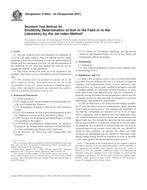 ASTM D5852-00(2007)..
ASTM D5852-00(2007)..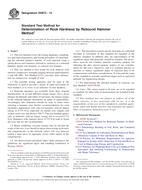 ASTM D5873-14
ASTM D5873-14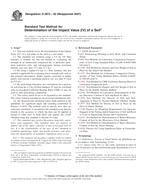 ASTM D5874-02(2007)..
ASTM D5874-02(2007)..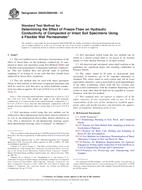 ASTM D6035/D6035M-13..
ASTM D6035/D6035M-13..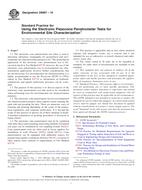 ASTM D6067-10
ASTM D6067-10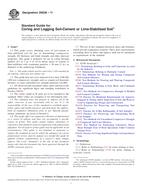 ASTM D6236-11
ASTM D6236-11
 Cookies
Cookies
